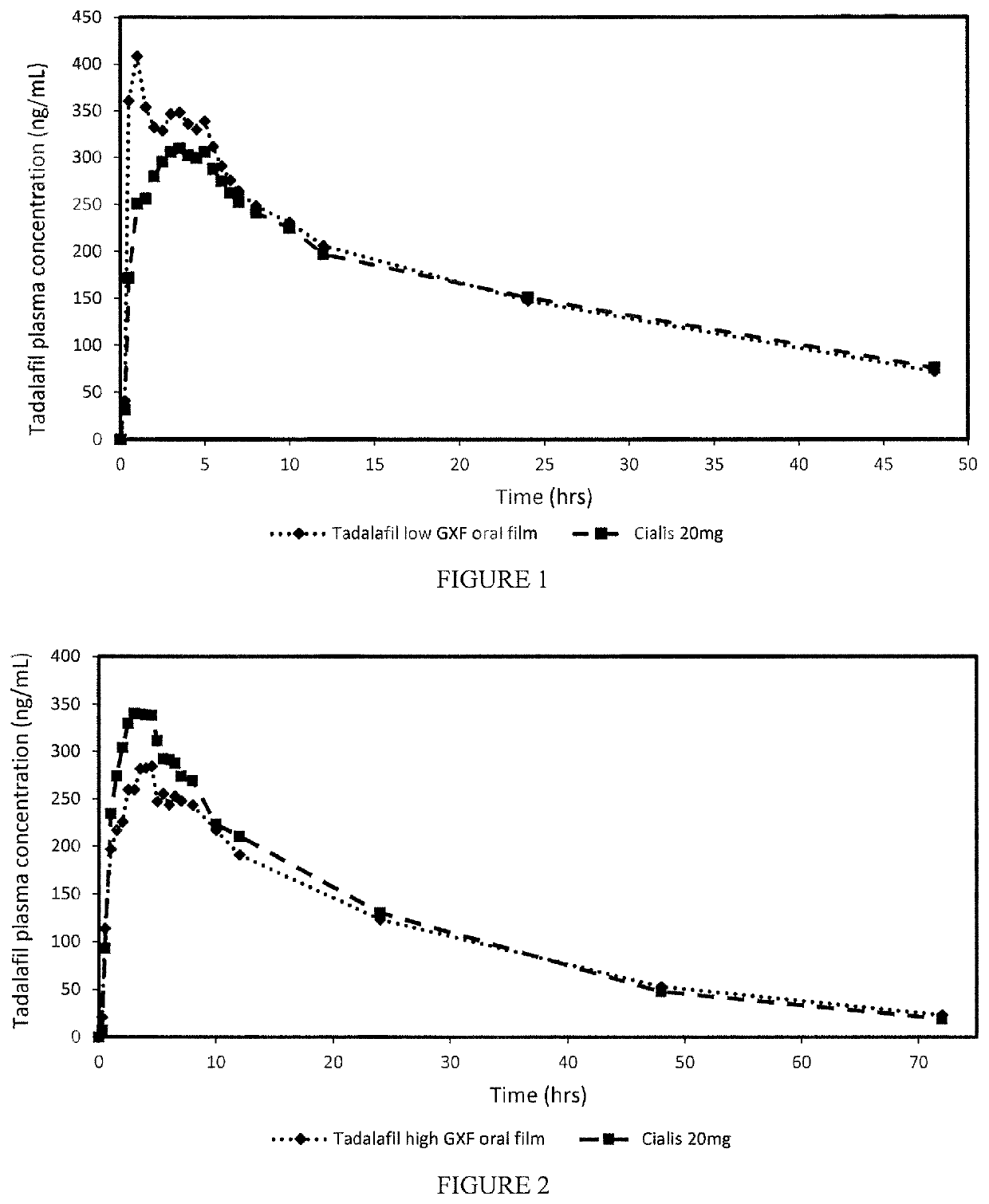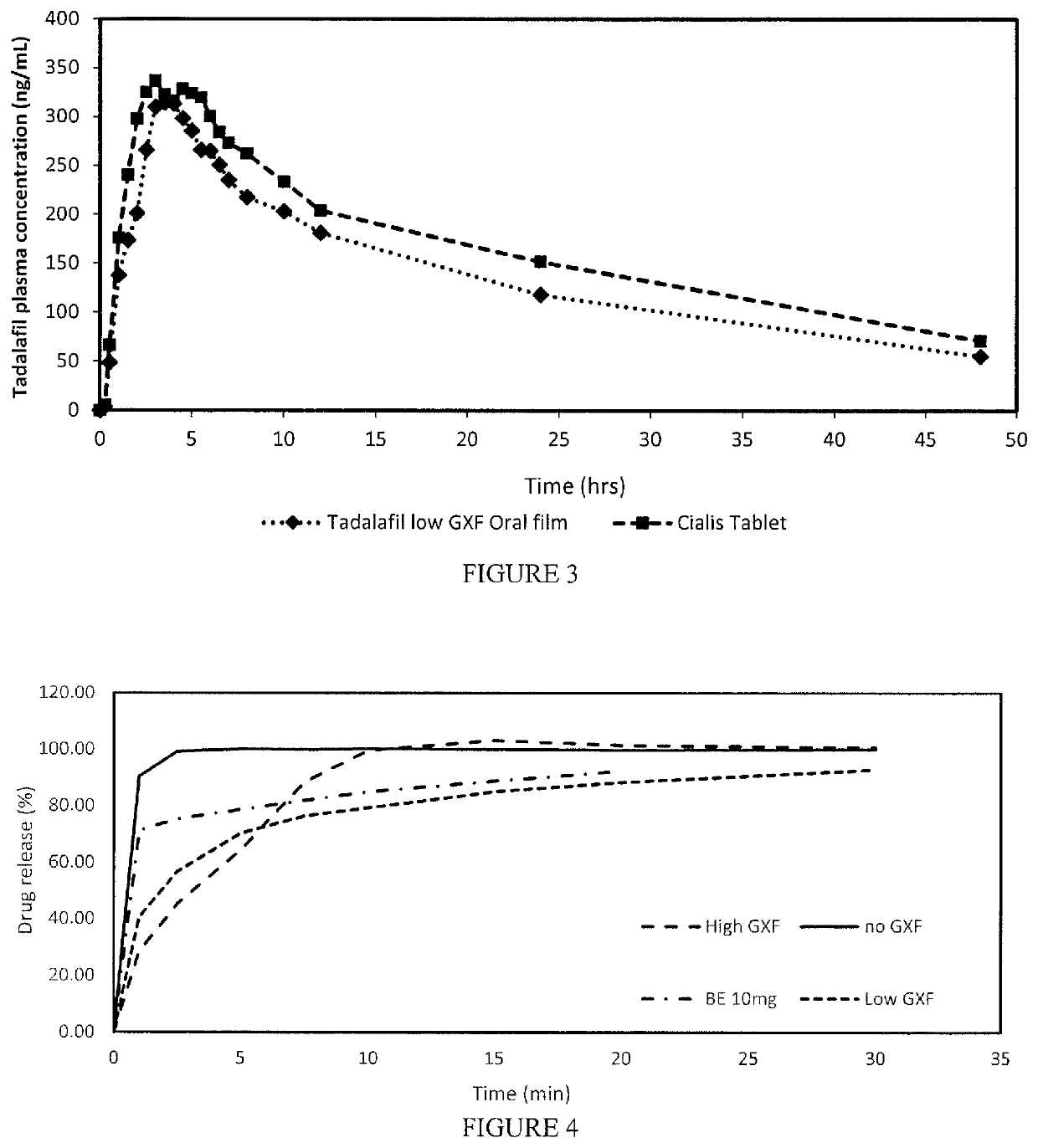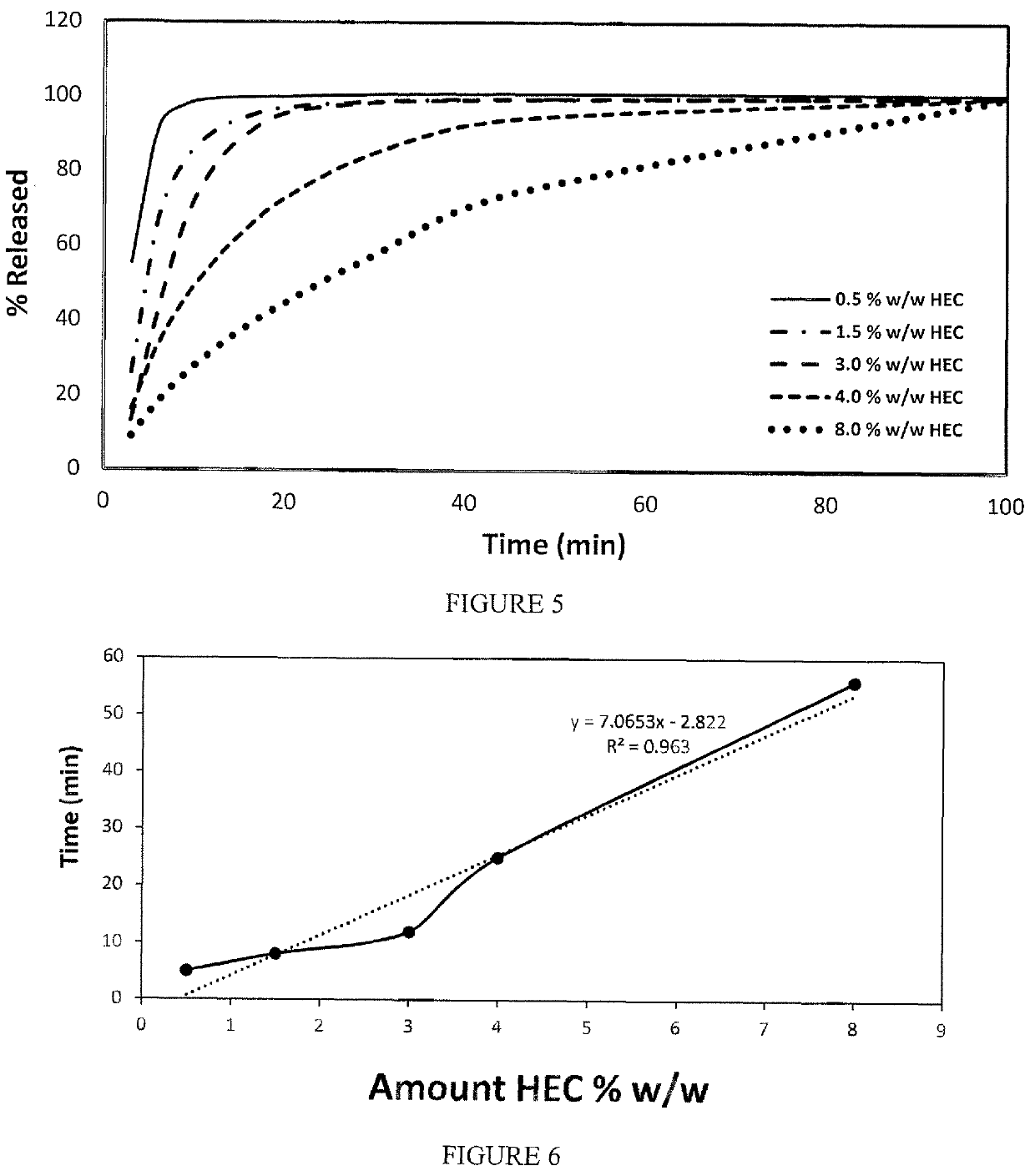Oral film formulation for modulating absorption profile
a technology of oral film and absorption profile, which is applied in the direction of pharmaceutical non-active ingredients, pharmaceutical delivery mechanisms, organic active ingredients, etc., can solve the problems of inability to design an oral dosage form that provides a desirable absorption profile, and inability to achieve rapid absorption
- Summary
- Abstract
- Description
- Claims
- Application Information
AI Technical Summary
Benefits of technology
Problems solved by technology
Method used
Image
Examples
Embodiment Construction
[0034]The oral film dosage form disclosed herein generally involves a film formulation comprising a very low quantity or percentage of highly viscous polymers to reduce the Cmax resulting from the early in vivo absorption of the API and potentially mitigating any side effects or adverse events generally associated with high early bioavailability.
[0035]An “oral film dosage form” generally refers to an edible composition that can be ingested by a subject (human or animal) to orally administer a predetermined amount of an active agent(s) to the subject, wherein the composition is in the form of a film.
[0036]The term “film” refers to a type of dosage form that is distinctly different from pills, tablets, caplets, and capsules, and in which the dosage form is a thin strip of material. Such films are typically rapidly disintegrating or rapidly dissolving, but can also exhibit longer disintegration time when required. The films are generally sufficiently flexible to allow bending or even f...
PUM
| Property | Measurement | Unit |
|---|---|---|
| Temperature | aaaaa | aaaaa |
| Fraction | aaaaa | aaaaa |
| Fraction | aaaaa | aaaaa |
Abstract
Description
Claims
Application Information
 Login to View More
Login to View More - R&D
- Intellectual Property
- Life Sciences
- Materials
- Tech Scout
- Unparalleled Data Quality
- Higher Quality Content
- 60% Fewer Hallucinations
Browse by: Latest US Patents, China's latest patents, Technical Efficacy Thesaurus, Application Domain, Technology Topic, Popular Technical Reports.
© 2025 PatSnap. All rights reserved.Legal|Privacy policy|Modern Slavery Act Transparency Statement|Sitemap|About US| Contact US: help@patsnap.com



